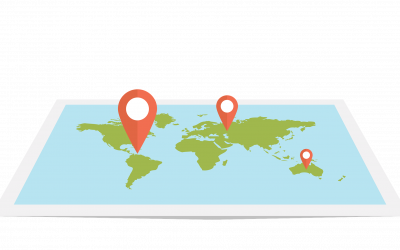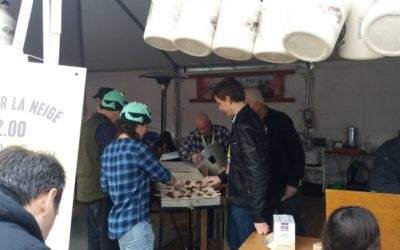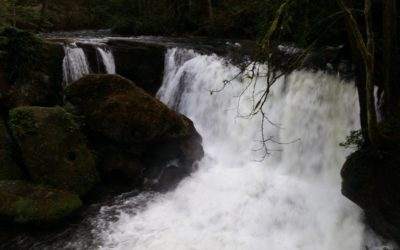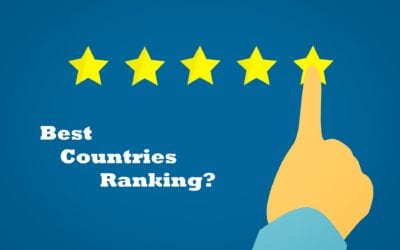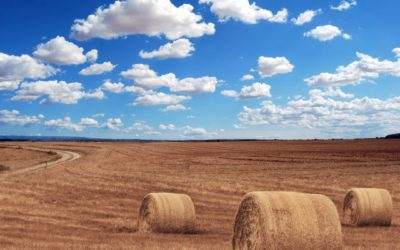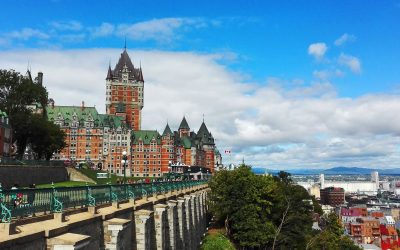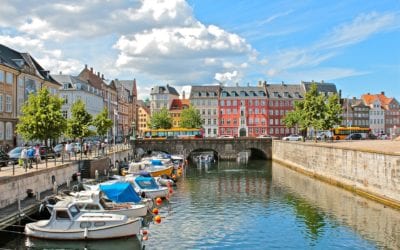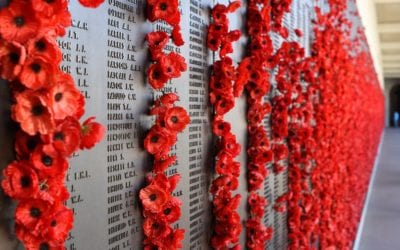Read our Translation Blog
Get the latest fun and facts from the language industry with our blog!
Need advice on website translation and localization?
Browse our ONLINE SHOP for ebooks on how to translate a website!
LingoStar’s Blog 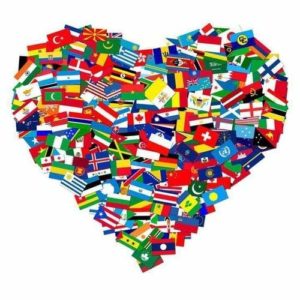
Welcome to LingoStar’s blog! On this page, you can find a lot of interesting and useful information about the translation industry. Explore topics on website translation and localization and how successful localization can influence your business to help your company grow and go global.
Language Blog Topics
On this blog, you can also learn about professional translators and interpreters, multilingual search engine optimization (SEO), the importance of socializing and networking and translators’ professional ethics. Quite often we write posts about the languages of the world, other cultures, and their traditions. Not only do translators convert texts from a source language to a target language, but they also help people communicate with each other, help establish international contacts, and are often prominent figures in the social, economic, and political life. Lastly, of course, we want you to have fun, so on our blog, you can find many posts that will entertain you and, hopefully, make you smile!
We hope you enjoy our blog and discover a lot of interesting things!
A Second Language can Enhance your Career (Part II)
Speaking a second language is also beneficial for YOU Being able to speak a second language is a real asset. It will open doors for you in a way you would never imagine. As reported by recruitment agencies, speaking foreign languages one can result in a rise of 8-20% of your salary. Also, the benefits of being bilingual are numerous in any given career. A multilingual employee may be trusted with new duties and responsibilities simply because of their ability to speak another language. They might also get the chance to go abroad as part of their job, and become a location, independent professional. Of course, with the development of the internet, it is possible for anyone to go abroad and gain experience. However there are many dialects around the world, so knowing the language of the place you’re visiting is an advantage. Furthermore, knowing the local dialect allows communication with others and total immersion in the culture of a country. Speaking a second language also helps you to create a multicultural environment and social network. It is an opportunity to get to know clients or colleagues whose languages you’re familiar with. Gaining a higher level in a foreign language Even though speaking another language may help boost your work opportunities, this does not necessarily mean having to be fluent. If some proficiency is an advantage, recruiters may be happy with just the basics – being able to welcome prospective new clients from overseas with a few polite phrases is always a good thing. There is room for all levels, but if you think you want to learn more and prove your skills... read moreEnhance your Career by learning a Second Language
Understanding the link between multilingualism and business When looking for work, the first thing to do is create or update a CV that will convince an employer that you are the one for the job. A second, third, or even fourth language will surely open doors and improve your chances to enhance your career. In the USA, most people speak English, even if it is not their first language. However, not many Americans, whose mother tongue is English, can brag about being multilingual. In today’s globalized business world, it’s no longer enough to only speak one language. Due to insufficient language skills and cultures knowledge, numerous companies lose business and pass over contracts every year. Employers worldwide are ready to invest in quality workers with multi-language skills and may give preference to multilingual people. For example, since Hispanics represent 15% of the US population, Spanish is a highly predominant language for recruiters in the United States, along with Chinese due to China’s worldwide economic influence. With globalization and integration developing so quickly, multilingual people find themselves offered more job opportunities as compared to monolingual individuals. Whether the job is located in Canada, the United States, or the United Kingdom, almost any job calls for language skills, and not just for jobs like journalism, transportation, tourism, banking, but also positions in retail, catering, reception, to name a few. However specialist language jobs like language teacher, translator or interpreter, require a higher level of education and expertise. Enhance your career, bridge the Gap It is clear that adding a language to any CV can enhance your career. It multiplies your chances of... read moreThe Importance of Localization – How Companies Localize their Products
The Importance of Localization and its Secrets Take a moment to look around you. No matter where you are, you will probably see items the entire world has heard about. Samsung TV? Nike shoes? An iPhone? All these brands have something in common; they are known all over the world. Whether you are Canadian, Chinese, French, American, Indian, or German, you can’t look at a can of Coke and wonder what it is. These companies have translated their products into so many different languages and exported them in so many different countries that you can now find them just about anywhere, even in the remote villages of Nepal nearby Mount Everest. These companies have all understood the importance of localization. The Big And The Giant So, how did big companies localize their products? What is localization? Localization is a process of product translation and cultural adaptation to account for differences in distinct markets. You can’t simply take a product made by your company and sell it in any country, as some content might be offensive to other cultures. Therefore it can be tricky to translate the brilliant idea and concepts involved behind the name of your company. For example, did you know that the name Coca-Cola comes from the coca leaves and the kola nuts used as a flavouring for the drink? Founder John S. Pemberton changed the ‘K’ of kola to C to make the name look better. Simple, concise, and the brand is known worldwide. Nonetheless, the brand encountered a certain problem when entering China. The original Chinese version of the name “ke-ke-ken-la” meant “bite the wax tadpole”.... read moreFestival du Bois – A French Canadian Experience
Get your French Canadian on! A French festival in British Columbia? Yes, that’s right, the Festival du Bois is coming! For those who didn’t know, Canada is divided into two regions: English-speaking and French-speaking. French is predominantly spoken in Quebec, where most of Canada’s native French speakers live, and it is Canada’s second official language. Unfortunately, Quebec is on the other side of Canada, and if you live in B.C. and don’t want to travel that far, just visit the Festival du Bois to get in touch with the French Canadian culture right here in British Columbia! When and where is the Festival du Bois happening? Every year, at the beginning of March, the festival takes place in the Maillardville neighborhood of Coquitlam, British Columbia, which is about half an hour from Vancouver. But what is so special about this festival? It is the largest and most attended Francophone festival on the west coast of Canada! Many people from Vancouver and its neighboring districts come here to speak French, have a lot of fun, and taste some real French Canadian food. The French language – an important part of the Festival du Bois! Most of the visitors speak French while they are here, but don’t worry! You won’t need a French translator to attend this special festival. But I really recommend leaving your comfort zone and trying to speak this beautiful language, even if you haven’t tried it yet! Words like “Bonjour” (Good Morning), “Salut” (hello) or “C’est quoi?” (What’s this?) will do. And don’t hesitate to ask people what all the words mean; no one is born a master.... read moreJapanese People Learning English are Having a Hard Time
Struggles of Japanese people learning English There are many aspects that make it difficult for Japanese people learning English. At first, we think about the differences between the English and the Japanese alphabet. However, I would like to introduce three others that many struggle with. Vowels following Consonants Firstly, in Japanese, a consonant is always followed by a vowel, like in the word ‘arigatou’ which means ‘thank you’. When Japanese people speak English, they tend to unconsciously add vowels after consonants, especially in words that end with consonants. In the case of ‘cat’, for example, many Japanese speakers will pronounce it like “kato”, with an additional ‘o’ at the end. That’s why English spoken by Japanese people can sometimes sound strange. English has many sounds that are not existent in Japanese and it is also one of the main reasons why our pronunciations can be peculiar. Number Another difficulty is that in Japanese, singular and plural forms are not important, so, Japanese people will often forget to use the correct form when speaking English. It may sound like it’s not a big problem, but when it comes to translating from Japanese into English it can pose some challenges. Since the number is not a grammatical construct in Japanese, it isn’t always clear which form should be used. Articles Finally, most Japanese people struggle with the use of articles because they do not exist in Japanese. Even those who have lived in English-speaking countries for a long time find it difficult to use articles properly. It is one of the most challenging aspects of English for Japanese people to master.... read moreColtan: The Mineral Which Creates Technology and Destroys Lives
What is Coltan? Nowadays we tend to spend most of our time looking at our phone or working on our computer. You might not realize it, but if you have a phone or laptop, you have one of the most valuable minerals in the world in your possession: Coltan. Simply put, Coltan is a mineral. But it is not just any mineral. This compound consists of a mixture of Tantalum and Columbite, some of the most much-appreciated minerals of our time. It’s very resistant to acids, transmits electricity rapidly (80 times faster than copper), and supports large loads, so it is used in almost all modern electronic circuit components. Where do we find it? Coltan can be found in many places around the world but 80% of it is located in Congo. To mine it, they dig caves in extremely bad conditions. They get it at a very low cost and sell it at a very high price. The Problem brought by Coltan Congo is the perfect place to exploit labor. They force people to work in bad conditions and earn poor wages. Afterward, the mineral is introduced in devices worth a small fortune. Raising Demand The world keeps developing so it needs more technology but the quantity of Coltan is decreasing. So the demand goes up along with the market value. The smartphone: Friend or foe? Most of us have at least a phone in our possession so we are all responsible for this situation. How are we destroying ourselves? All the time we need more technology more often: better communication, find a location, etc. But it is also... read moreThe Best Countries in the World – Ranking Results
Canada Is Second in the Best Countries Ranking! This is official, Canada got the second place this week from the U.S. News Best Countries ranking in their ranking for the best countries in the world. And we are sufficiently proud of it. But let’s be sincere: Who does actually know what it takes to succeed in this ranking? How do they carry it out and which factors count in? Because “Best country” sounds quite general. So let us give you a brief insight into the ranking, the methodology, and the data. What Is the Best Countries Ranking? The Best Countries ranking is the result of a yearly study which is carried out by the US News & World Report. It is a project created to capture how countries are perceived on a global scale. The final ranking is made according to a set of 65 countries’ attributes which are grouped in 9 categories. These 9 sub rankings listed below eventually calculate the country’s overall ranking score. Adventure (3.24 percent) friendly, fun, pleasant climate, scenic, sexy Citizenship (16.95 percent) cares about human rights, cares about the environment, gender equality, progressive, religious freedom, respects property rights, trustworthy, well-distributed political power Cultural Influence (12.93 percent) culturally significant in terms of entertainment, fashionable, happy, has an influential culture, modern, prestigious, trendy Entrepreneurship (17.42 percent) connected to the rest of the world, educated population, entrepreneurial, innovative, provides easy access to capital, skilled labor force, technological expertise, transparent business practices, well-developed infrastructure, well-developed legal framework Heritage (3.17 percent) culturally accessible, has a rich history, has great food, many cultural attractions Open for Business (11.99 percent) bureaucratic,... read moreThe Spanish Language. A new emerging speakers around the World!
The Spanish Language With 410 million native speakers the Spanish language is the second most-spoken language in the World. It is the official language in 21 countries above all and it counts many different accents. As one of six official languages of the United Nations, it is the official language of the European Union, the Organization of American States, and the Union of South American Nations, among other international organizations. The language of the Castile region of Spain became the official Spanish language thanks to King Alfonso’s efforts in the 13th century. The Royal Spanish Academy (Real Academia Española), created in the 18th century, is widely considered the arbiter of standard Spanish. It produces authoritative dictionaries and grammar guides. Although its decisions do not have the force of law, they are widely followed in both Spain and Latin America. Although Spanish comes from the Iberian Peninsula as a descendant of Latin, today it has far more speakers in Latin America. This is mostly due to the Spanish colonization of the New World Arabic was the next big influence on Spanish after Latin and today, the language exerting the most influence is English. Spanish has adopted hundreds of English words, especially those related to technology and culture. Need a translation in Spanish? No problem! Do you need a translation in European Spanish or Latin American Spanish? We can help you! Here at Lingostar, we have professional translators who are native speakers of both Spanish languages. We also have a range of other services to offer such as revising, updating and localizing your content into more than 100 languages. And if you... read moreFrench Canadian And Its Many Differences With French European
What makes Quebec and French Canadian special Quebec is a ‘special’ Canadian province in many ways, but it is especially known for being the only province where English is not an official language! It is well known that the people of Quebec fought for the French Canadian language despite the huge English influence. Finally, in 1977, the French Language Charter set French as the only language for advertisement and education in Quebec. Despite this, it is important to refer to the French dialect in Quebec explicitly as Canadian French in order to differentiate it from the Metropolitan French dialect from France. French people often claim that they have trouble understanding Canadian French. Let’s explore some of these potential differences. Pronunciation differences The most notable differences between Metropolitan and Canadian French are probably to do with pronunciation. Whereas French, in general, contains a very rich vocalic inventory compared to other languages, Canadian French has even more vowel sounds (around 15) than that of France. Quebeckers also tend to reduce their use of consonants significantly and to use abbreviations extensively. The use of articles (le, la) is similar to Portuguese. Instead of saying “le” or “la” (the), they will often say “el” (or l’) and “a”. In some cases, “le” becomes “l apostrophe” in front of a consonant. Vocabulary in French Canadian changes from French European French Canadian vocabulary is distinctive from the vocabulary of Metropolitan France. This is not surprising considering that since its arrival in Canada, the French language was exposed to many different influences. It couldn’t possibly have developed in the same manner as in Europe. Some even... read more1000 likes song
1000 likes song! LingoStar wants your like, what do you think of our 1000 likes song? Click here to Like our Facebook... read moreBilingual signs lost in translation problem in Canada
Bilingual signs are a necessity in Canada As a bilingual country, Canada provides a great number of services in both French and English. Labels, product descriptions, and road signs are therefore often bilingual. Sometimes, however, they get lost in translation. The stop sign, most often found in Quebec and New Brunswick, is common in jurisdictions with significant francophone and anglophone populations. Translating the single word “Stop” seems somewhat unnecessary as STOP and ARRET could both be considered valid French words. But what about following sign found in Fredericton, New Brunswick: The yellow warning sign reads: “Caution: Raised manholes/Attention: Trous d’homme sur éléves”. If we put this in the online translation service Google Translate, we get “Warning: Manholes on pupils”, which makes no sense at all. It’s almost worse if we literally translate it to “men’s holes over-elevated”! No doubt a professional translator’s help is the safest way to make sure the sign reads naturally in both Canadian English and French. These bilingual signs need a precise translation In regards to food labels, the legislation in Canada is even more strict. Companies have to show mandatory information in both languages. This is restrictively defined by the Canadian Consumer Packaging and Labeling Act. And let’s be honest, without some of these bilingual signs we would certainly be lost!! 😀 Some product designers use the bilingual labeling law with a sense of humor. Although these bilingual signs might sometimes seem ridiculous or redundant, only a small fraction of the population speak both languages fluently. Professional translation services are therefore indispensable, especially in regards to more extensive documents and signs that affect public health and safety.... read moreChristmas Traditions From All Over the World – Merry Christmas
Looking at Christmas Traditions From All Over the World Our final 2015 newsletter will focus on Christmas: one of the most important holidays celebrated throughout the world. Although every culture has its own traditions, there are many surprising similarities in Christmas traditions from all over the world. First, you will always find candles and lights, even in countries that celebrate Christmas during summer. There is also the decorated tree and the old white-bearded man that plays one of the leading roles. His name diverges from Santa Claus to Baba Chaghaloo, to Sheng dan lao ren to Papa Noel. Wherever you might be, Christmas is a time to highlight the value of being with family and friends. This newsletter, however, aims to feature some countries that do something completely different. We will present you with some Christmas traditions from all over the world you might have never heard of before. We also invite you to learn about traditions in the countries of Armenia, Costa Rica, Ethiopia and Finland. Armenia – Շնորհավոր Սուրբ Ծնունդ (Merry Christmas) The Armenian people celebrate their Christmas on January the 6th, a date otherwise known as Epiphany or Three Kings’ day in some countries. In Armenia, however, they celebrate the birth of Christ and his baptism on this day, the 6th of January. While many countries enjoy a lot of culinary delicacies during the time before Christmas, Armenians do the contrary. Traditionally, they fast during the week leading up to Christmas, avoiding eggs, dairy products, and meat. The name of the traditional Christmas Eve dinner to which families gather together is khetum and consists of rice, fish and... read moreThe Danish Language and How It Is Changing
Denmark and the Danish Language Denmark, where the Danish language is spoken, is a country with four hundred islands surrounded by two seas. It’s a beautiful country with the charming capital of Copenhagen, as well as Greenland, the biggest island in the world, which also belongs to the great Kingdom of Denmark. Lego, The Little Mermaid and beautiful castles are all part of the Danish identity. The country is full of intelligent, agreeable and welcoming people. But the Danish language in Denmark has experienced some challenges as of lately. It has strongly been influenced by English. Therefore, changes are happening in the Danish language and there are several reasons for this. Firstly, the Danish phonology, which is how sounds are organized and used in languages, has been mutating strongly since 1950. Danish people like to shorten their words and try to use the least energy possible to pronounce them when speaking. Danes are said to talk like they have something in their mouth. Secondly, all Danish people learn the language growing up but increasingly like to speak the English language because it’s easier to learn and pronounce. Thirdly, you see a greater influence of the English language in traffic signs, media and advertisements all over Denmark. All this impacts the way the Danish language is being presented in its written and spoken form and how it is perceived by the younger generation. Check out an interesting video below explaining some of the challenges of Danish. Here at LingoStar, we translate all cultural materials and business documentations from English into Danish, and other Scandinavian languages, such as English to Swedish,... read moreRefugees in Europe and Their Influences on European Languages
A serious language-related issue The government is planning to resettle 25,000 refugees in Canada by February 2016 with 10,000 of them coming over the next few weeks, just like Europe did years ago. This raises some concerns: how to create enough accommodation, how the economy will be affected, and how well they will integrate into society. But there is another issue that is extremely important: The language barrier! It can be a serious problem for immigrants, especially for professionals, who cannot just continue their careers because of missing language skills. This is how stories about doctors driving cabs and engineers washing dishes become truth. Language teachers and translators are already at the start gate. Which will be the most required languages connected to the influx of refugees? Here’s a short overview: Arabic refugees in Europe, عربي ,عربى Over 290 million people worldwide speak this language, in countries like Tunisia, Egypt, and Syria – the country of provenance of most of these refugees. You might have heard that Arabic speakers write from right to left or that they use a different alphabet but did you know that the English language consists of many words with Arabic origins like cotton or magazine? Kurdish refugees in Europe, کوردی, Kurdî Kurdish is not just one language but a continuum of different languages which has a number of dialects spoken by Kurds in Western Asia. Its standard form, Sorani, is one of the official languages of Iraq – another departure point of many refugees. The Kurdish language is still a bit of a mystery to most historians but it is apparently born during the Medieval... read moreRemembrance Day and Red Poppies for Fallen Soldiers
Why do we celebrate Remembrance Day on the 11th of November? Originally called “Armistice Day”, Remembrance Day was introduced after the First World War in order to commemorate the Armistice agreement signed on Monday, November 11, 1918, at 11 am. It was the treaty that put an end to the war. Later, it became a holiday of remembrance for all the soldiers of the Canadian Army in times of war. Why is the Remembrance Poppy so famous? During the entire week of Remembrance Day, the people in Canada pin red poppies on their jackets, inspired by the World War I poem “In Flanders Fields“. It was written by the Canadian Lieutenant Colonel John McCrae, who served in the Army and witnessed his friend’s death. Poppies were the first flowers that grew on soldiers’ graves in Flanders (Belgium). It then became a symbol of remembering the victims. What happens on Remembrance Day? The official Canadian national ceremonies happen every year at the National War Memorial in Ottawa according to a strict protocol. At the same time, throughout the whole country celebration services and parades take place. A minute of silence is often held at 11 am. This is in order to pause for a moment and remember all the sacrifices Canadians made in armed conflicts. Remembrance Day Worldwide Not only Canada but also many members of the Commonwealth celebrate this day in order to remember the members of their armed forces who have died on duty. With ongoing wars all over the world and millions of victims falling every week in military conflicts it is crucial to remember them. LingoStar... read moreTranslation Blog and News
LingoStar has been a language services provider in Canada, the USA, and Europe for more than a decade. We are proud to say that we cooperate with professional translators, interpreters, and other language specialists worldwide and work with over 100 language pairs. If you are looking for a reliable translation company, contact LingoStar! We are always ready to help you with your projects and documentation. Get a free quote online.


